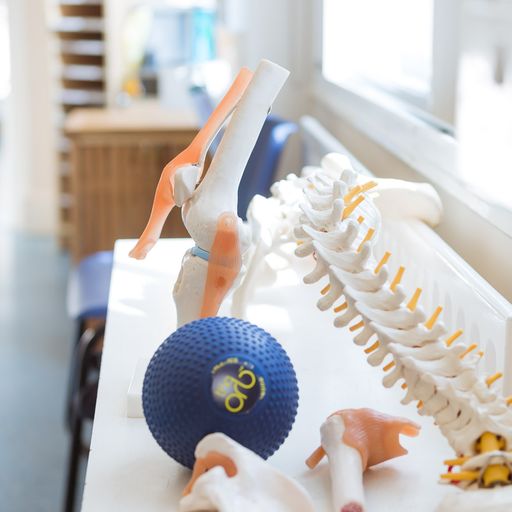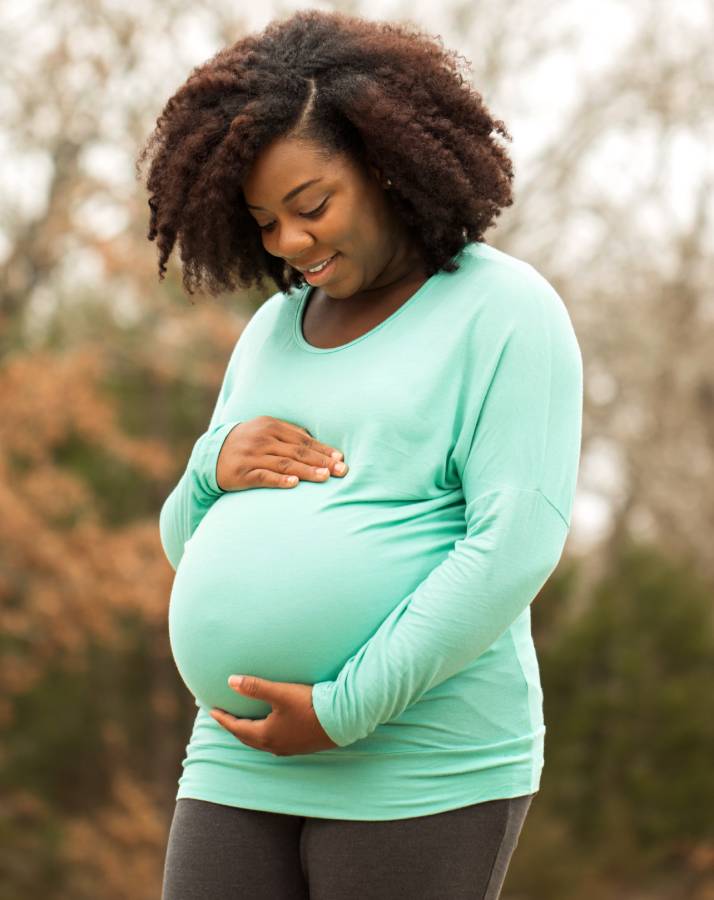Musculoskeletal effects of pregnancy
Effects Of Pregnancy On the Musculoskeletal System
At CSPC in Leeds, we are keen for you to enjoy your pregnancy as much as possible, so please get in touch with our admin team if you want to know more about how physiotherapy might be able to help you.

Relaxin
A hormone called relaxin is released from the beginning of the pregnancy, which helps to prepare the ligaments in the pelvis for birth. Relaxin starts to affect the ligaments of the pelvis from six weeks, and reaches it’s peak levels at twelve weeks. This high level continues throughout pregnancy and not only affects the ligaments around the pelvis, but also affects all the other ligaments in the body, causing there to be more joint play in all joints. The pubic symphysis and sacroiliac joints are particularly affected by relaxin. This laxity in the ligaments around the pelvis, hips and feet will alter the lower limb biomechanics which further affects the stability of the pelvis, and this can result in pain.
Core control and strength
As the abdominal muscles are stretched throughout the pregnancy, there is a loss of tone and strength. It is possible to continue to work on the strength of the abdominal and core muscles throughout pregnancy, under the guidance of a physiotherapist or Pilates teacher, who will take into account the stages of pregnancy. There will also be a normal split in the tendon vertically in the middle of the abdominal muscles (diastasis recti), which means care will need to be taken in the rehabilitation of the abdominal muscles after pregnancy, and the advice of a physiotherapist should be followed.
Visceral issues
There are a number of potential effects on the organs , that begin to occur during pregnancy and can continue post pregnancy. As the baby grows and the uterus becomes larger, there is increased pressure on the kidneys (which also increase in size during pregnancy), the liver, and stomach, as well as the other organs. This reduces the mobility of the diaphragm, which will affect breathing, digestion, and bowel function and this can continue after the baby is born. There is also increased pressure on the bladder. Reduced mobility in the visceral system can cause stiffness and pain in the back; altered alignment in the pelvis and neural symptoms.
Pelvic and Spinal alignment
Back and pelvic pain is common during and after pregnancy. This is in part due to increased laxity of the ligaments around the pelvis, in the pubic symphysis and around the sacro-iliac joints (SI joints). It is also due to alterations in the position of the pelvis caused by flexibility and strength changes, and the size of the bump. The pelvis can tip anteriorly, which will put additional stress on the SI joints and the pubic symphysis. This will mean the bump is lying slightly more in front of the pelvic rim, rather than on top of it, and will cause increased tightness in the back muscles to support this. Some of the anterior tilt of the pelvis is due to tightness in the quadriceps muscles (the muscles down the front of the thighs) which attach onto the front of the pelvis and will tip it forwards. This tightness can be further increased by the pressure of the baby on the femoral nerves as they pass through the pelvis and into the thighs. The femoral nerves are the nerves which innervate the quadriceps muscles and if irritated, can cause increased muscle tone, and tighten the quads further.
Read ‘Other changes to your body during pregnancy’, here.
Pelvic floor
Carpal Tunnel Syndrome
This is tingling and numbness in the hands due to swelling in the carpal tunnel, which is the bony canal formed by the bones in the wrist (carpal bones) and the ligament running across the front of the wrist. The median nerve passes through the canal which is relatively narrow, and the swelling that occurs with pregnancy can reduce the space in the canal and compress the nerve, resulting in pins and needles in the hands, weakness in the thumb and a dull ache in the hands and arms. Raising the hands and arms, resting them frequently if typing and supporting the hands on a pillow at night can all help to relieve symptoms. Physiotherapy can help with this by improving wrist mobility and working on the nerves that run through the arms.

Upper back pain
Postural changes, increased laxity in ligaments, greater weight anteriorly due to the baby bump, a larger bust size, and breast feeding will all contribute to upper back pain. It is recommended that attention is paid to posture, both during pregnancy and after the birth. Using a pillow or two to support the baby on your lap when feeding will help to take some pressure off your upper back. A supportive bra can also help to relieve upper back pain.
Pectoral muscles (the muscles across the front of the chest) also get tight due to sitting in a more rounded position. Stretching these can help to maintain posture by helping to prevent rounded shoulders.
Laxity in ligaments in the feet
Relaxin not only affects the ligaments around the pelvis but can also have a marked effect on the ligaments in the feet, which are also under increased strain due to increased body weight.
It is advisable to wear supportive shoes, and wear orthotics if you have been prescribed them, even around the house, especially if your ligaments have become very loose and you can see that your feet are becoming more flat than usual.
Swelling in legs
Pain under ribs/ heartburn
Stretches and strengthening
The correct stretching exercises can help to maintain good pelvic alignment and minimise postural changes and pain. It is also useful to maintain strength in the abdominal and gluteal (buttock) muscles to help with pelvic stability, reducing stress on the ligaments in the pelvis, sacroiliac joints and pubic symphysis. A CSPC physiotherapist can advise the correct exercises for you to do for your stage of pregnancy.
MEET THE TEAM
Constantly challenging ourselves to be the best
We are dedicated to continually training, challenging and developing ourselves to ensure we are at the leading edge of our profession. The best practices are constantly evolving and Alison leads the internal training at the clinic, working with the team, in small groups and individually ensuring that all staff provide the same high standards of care. All members of CSPC staff also attend regular external training. Many of these courses are run at the clinic with external educators to further expand our knowledge and experience.
PATIENT TESTIMONIALS
GET IN TOUCH
If you have any questions, are ready to book an appointment or are planning your trip to see us then you’ll find all the information you need below.
Talk To A Physio
Not sure if physiotherapy treatment can help? Just Ask a CSPC physiotherapist & they’ll be able to advise you.
LEARN MORE
